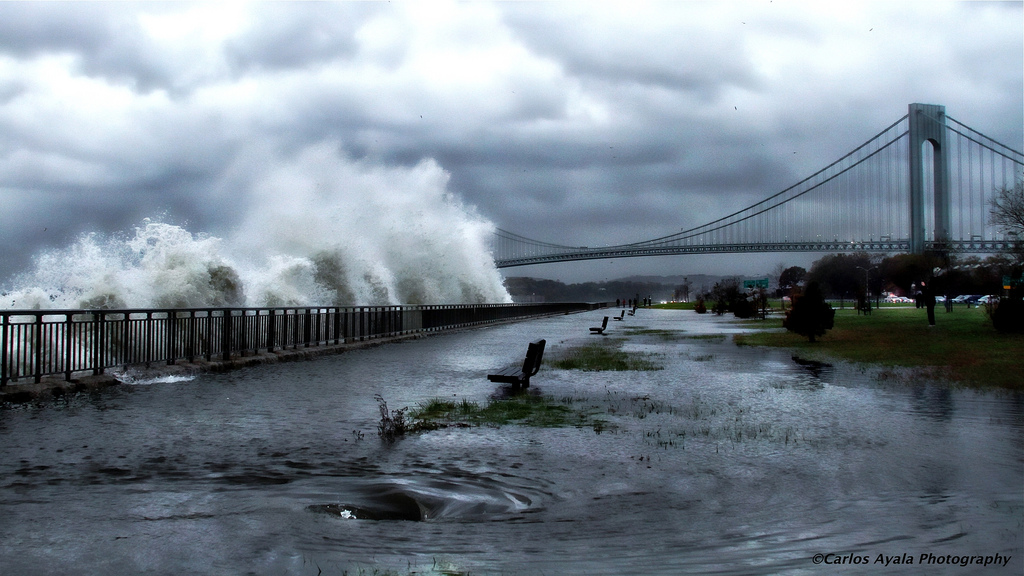
'Black Swan' Storms: Extreme Cyclones Linked to Warming Seas

SAN FRANCISCO — A "black swan" cyclone may sound like the latest comic book hero, but this "extreme of the extremes" is the result of climate models that suggest global warming will make future hurricanes more intense.
The rare monster tropical cyclones (the term for hurricanes, typhoons and other tropical storms) could inundate coastal areas with storm surges greater than 15 feet (4.6 meters), and could even surpass 30 feet (9 m) in some regions of the world. The research was described here yesterday (Dec. 3) at the annual meeting of the American Geophysical Union.
By simulating thousands of possible future storms, researchers identified the outliers that could hit coastal areas in the future but that wouldn't show up in predictions based solely on historical records, said Ning Lin, a professor at Princeton University. The scientists relied on the same model the National Weather Service uses to predict hurricane activity for a given season.
Extreme of extremes
Lin and colleague Kerry Emanuel of MIT looked at the possible storm surge from extreme storms in three locations: Tampa Bay, Fla., Dubai, United Arab Emirates (UAE), and Darwin, Australia.
Lin said more than 16 feet (5 m) of surge was possible in Tampa Bay. A Florida black swan hurricane would move northward, parallel to the west Florida coast. The probability of one of these storms hitting Tampa Bay is one in 10,000, Lin said.
Even though Hurricane Sandy broke several records and generated tremendous storm surge, the superstorm was not a black swan, Lin said. The simulated storm surges calculated by the model for New York, at up to 16 feet, top the record set by Hurricane Sandy, at 14 feet (4.3 m) — part of which was the high tide at the time. [Infographic: Timeline of Sandy's Week of Destruction]
Sign up for the Live Science daily newsletter now
Get the world’s most fascinating discoveries delivered straight to your inbox.
Tropical cyclones are already extremely rare in the Arabian Sea, with its low humidity and high wind shear, which disrupts storm formation, but one made landfall in Oman and Iran in 2007. Extreme storm surges of 30 feet (9 m) in Abu Dhabi, UAE, and Doha, Qatar, and 23 feet (7 m) in Dubai are possible as a result of a black swan storm, the researchers report in their abstract for the meeting.
Finally, in Darwin, which was immensely devastated by Cyclone Tracy in 1974, a black swan storm could generate surges above 33 feet (10 m), the researchers plan to report in a talk on their findings on Tuesday.
Global warming and extremes
The model Lin and Emanuel used to look at the effect of black swans takes into account the effects of climate change.
Rising ocean temperatures have shifted the intensity of tropical cyclones, which include hurricanes and typhoons, to higher levels. In the past century, sea surface temperatures have risen 0.9 degree Fahrenheit (0.5 degree Celsius) globally. Scientists continue to debate whether this increase in temperature will boost the intensity or decrease the number of storms. Globally, about 90 tropical cyclones, on average, occur every year.
"There's still a debate about the impact of climate change on tropical cyclones," Lin said. "Most studies show that the intensity of tropical cyclones tends to increase under the impact of climate change. Some say that the frequency of total storms will decrease," she said.
However, Lin added, "When we talk about black swans, we talk about the extreme of the extremes. The total fraction [of extreme storms] will increase even though the total numbers will decrease."
This stoyr was provided by OurAmazingPlanet, a sister site to LiveScience. Reach Becky Oskin at boskin@techmedianetwork.com. Follow her on Twitter @beckyoskin. Follow OurAmazingPlanet on Twitter @OAPlanet. We're also on Facebook and Google+.










